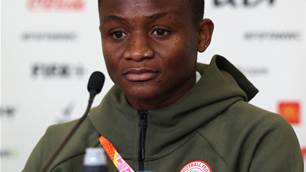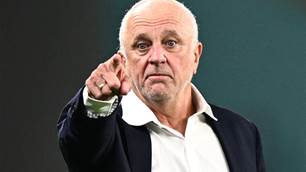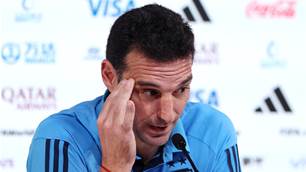In the immediate aftermath of a World Cup draw, fans and journalists alike quickly scanned through the list of nations, looking to locate the infamous ‘group of death’.
This year, you could make a strong case for Group D, which will play host to an array of talent from Argentina, Croatia, Nigeria and Iceland. Here are 10 facts about the group and what you can expect when the sides go head-to-head in Russia.
1. Scraping through
Argentina and Croatia may be the favourites to progress from Group D, but neither nation qualified for Russia in the most convincing fashion. The latter came through a two-legged play-off with Greece, while La Albiceleste would have missed out on the tournament if it wasn’t for a Lionel Messi hat-trick against Ecuador in October. In contrast, underdogs Nigeria and Iceland (who were in the same group as Croatia) finished top of their respective qualifying groups. All to play for then.
2. Size matters not
Iceland became the smallest ever nation to qualify for a World Cup, with a population of approximately 335,000. The previous smallest nation to reach the finals was Trinidad and Tobago in 2006, with a population of 1.3 million.
3. Déjà vu
For the third World Cup in succession, Argentina and Nigeria have been paired in the same group. In 2014, La Albiceleste prevailed 3-2 in a thrilling contest, while in 2010, Gabriel Heinze’s header was enough to separate the two sides. The Super Eagles were also beaten 1-0 by their South American rivals at the 2002 tournament. Keep trying lads.

4. Bold Move
For the third qualifying campaign in a row, Croatia changed their manager ahead of a crucial game – and, to be fair, it worked. Zlatko Dalic needed a result away in Ukraine to secure a play-off spot, just three days after replacing Ante Cacic. The Vatreni won 2-0 courtesy of an Andrej Kramaric double. What was all the fuss about?
5. Super Eagles flying high
Nigeria were the first African nation to qualify for Russia on October 7, 2017, after Alex Iwobi’s second-half winner secured a 1-0 victory over Zambia. The Super Eagles also defeated Cameroon and Algeria to win a tough qualifying group, meaning Nigeria have now qualified for six of the last seven World Cup finals. Consistent.
6. From the dentist's to the dugout
Much was made of Heimir Hallgrimsson’s role as a part-time dentist following Iceland’s shock victory over England at Euro 2016. After spending five years as Lars Lagerbäck’s assistant, 50-year-old Hallgrimsson is now the main man in charge of the national team. Now he must find a way to stop Lionel Messi on June 16.

7. One In, One Out
Argentina went through three managers during qualifying - the same number they had from 1974 to 1994. Following Gerardo Martino’s resignation and Edgardo Bauza’s dismissal, former Chile manager Jorge Sampaoli managed to salvage La Albiceleste’s place in Russia. Just. Sampaoli at least has a contract until 2022 so the Argentine FA may not be so quick to wield the axe this time.
8. Out at the first hurdle
Croatia have failed to make it past the group stages since their tournament debut in 1998, when the Vatreni made it all the way to the semi-finals. Since then, Croatia have won just two matches at the 2002, 2006 and 2014 tournaments combined.
9. Thrown in at the deep end
Nigeria goalkeeper Ikechukwu Ezenwa was handed the number one jersey by manager Gernot Rohr, following Carl Ikeme’s decision to stop playing after being diagnosed with leukaemia. Ezenwa, 29, has never played for a club outside his homeland and is likely to face the challenge of trying to keep Messi, Sergio Aguero and Gonzalo Higuain at bay when the Super Eagles face Argentina on June 26. Good luck Ikechukwu.
10. Keep it clean
Argentina received the most yellow cards in a competitive CONMEBOL qualifying group (48) – four more than Venezuela and Bolivia. Manchester City defender Nicolas Otamendi picked up seven of those bookings, more than any other player.
Related Articles

Nigeria out to shock World Cup heavyweights England

Socceroos coach says Argentina can only 'play two ways'













